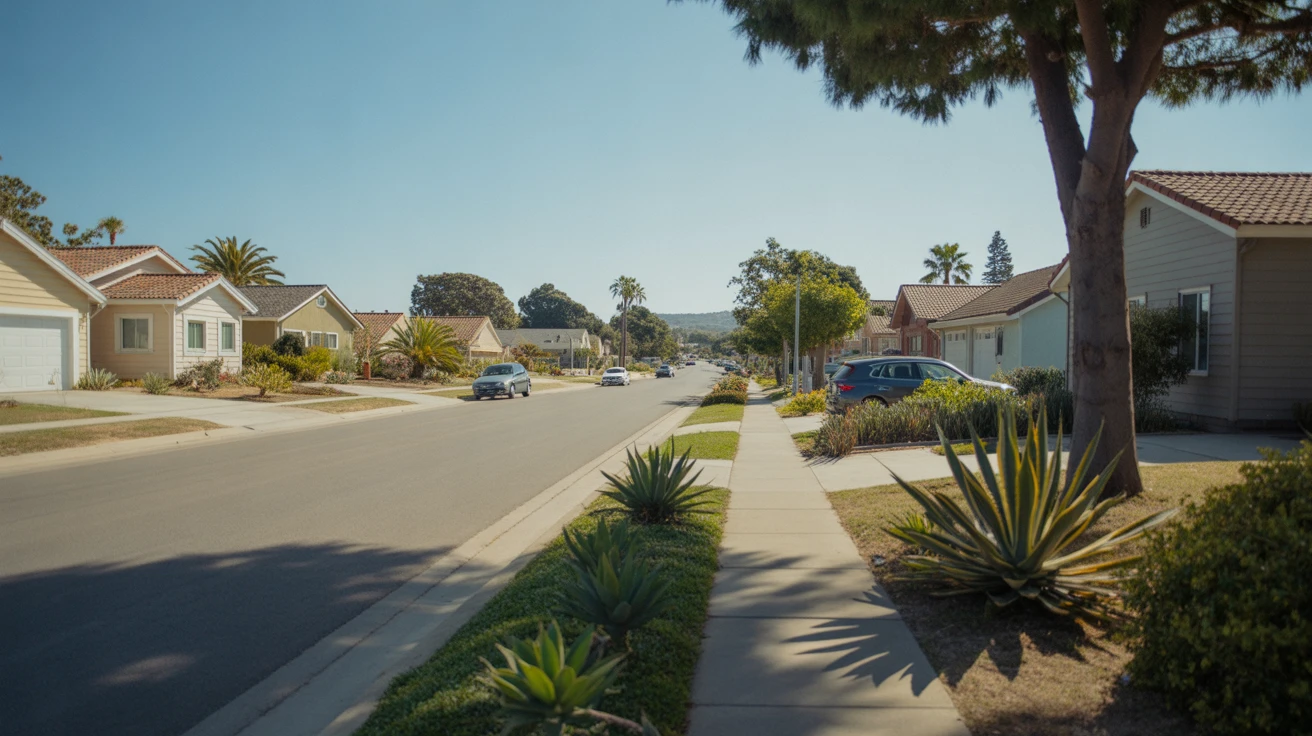
Understanding Utilities in Vista
Here’s what typical utility costs look like in Vista. For most households, monthly utilities include electricity, water, trash collection, natural gas, and recycling. The specific utilities cost in Vista depends on factors like home size, appliance efficiency, and seasonal weather patterns. The average household spends $200–$350 per month on utilities in Vista.
Rental properties in Vista often include some utilities in the monthly rent, such as water, trash, and sewage. However, renters are typically responsible for paying their own electric and gas bills. It’s important to clarify with your landlord exactly which utilities are covered before signing a lease.
Homeowners in Vista have more control over utility costs but also bear full responsibility for all bills. Researching internet costs in Vista and comparing energy providers can help keep monthly expenses manageable. Being aware of any hidden costs of living in Vista, such as special district assessments, also supports accurate budgeting.
Table: Monthly Utility Estimates
Wondering how much your monthly bills might run? Here’s a quick breakdown for a typical home in Vista:
| Utility | Estimated Monthly Cost |
|---|---|
| Electricity | $100 – $200 |
| Water | $60 – $100 |
| Natural Gas | $30 – $50 |
| Trash & Recycling | $20 – $40 |
| Total | $210 – $390 |
Estimates reflect a mid-size household in a single-family home. Actual costs vary based on usage and property characteristics.
How Weather Impacts Utilities in Vista
Seasonal weather patterns have a significant effect on utility costs in Vista, especially when it comes to electric bills. Located just seven miles from the Pacific coast, Vista experiences a mild Mediterranean climate with warm, dry summers and cool, relatively damp winters.
During the summer months, temperatures often climb into the 80s, driving up demand for air conditioning. Many Vista households see electric bills 30–50% higher in July and August compared to more temperate months like April and October. Coastal breezes help moderate the heat, but inland neighborhoods are more susceptible to spiking AC costs.
Winter brings cooler weather, with average highs in the 60s and lows dipping into the 40s overnight. While Vista rarely sees frost, the chill is enough to trigger heating needs that can bump up natural gas or electric bills. Still, winter utility costs in Vista are much lower than those in colder climates, where heating needs are more extreme.
How to Save on Utilities in Vista
Utility costs are a fact of life, but Vista residents have many options to keep monthly bills under control:
- Sign up for off-peak billing programs to access lower electricity rates during less busy hours
- Take advantage of solar panel incentives to generate your own clean, affordable energy
- Install a smart thermostat to automatically optimize heating and cooling schedules
- Plant shade trees near your home to block summer sun and reduce AC strain
- Upgrade to energy-efficient appliances as older models wear out
🏆 Tip: Check if your utility provider offers rebates for installing new energy-efficient AC units. These programs can cover a substantial portion of replacement costs.
FAQs About Utility Costs in Vista
What is the average electric bill in Vista during summer?
Typical summer electric bills in Vista range from $150 to $300 per month, depending on home size and AC usage. Bills often peak in August, when temperatures are highest.
Do HOAs in Vista cover any utilities?
Some condo and townhome HOAs in Vista cover water, trash, and sewage costs. However, it’s rare for HOAs to pay for electricity or natural gas. Always check your specific HOA contract for details.
Is water more expensive in Vista than nearby cities?
Water rates in Vista are comparable to those in most of north county San Diego. Prices may be slightly higher than national averages due to the costs of importing water to Southern California.
Smarter Utility Planning in Vista
While utility bills are unavoidable, understanding the key drivers of utilities cost in Vista enables smarter budgeting. Expect to see the highest electric bills during Vista’s warm summers, but remember that winter heating costs are milder than in many other regions.
Proactive steps like choosing an off-peak billing plan, improving insulation, and installing water-saving fixtures can significantly reduce monthly utility costs. With a clear picture of typical utility expenses in Vista, you can plan ahead to keep your household running smoothly in every season.
